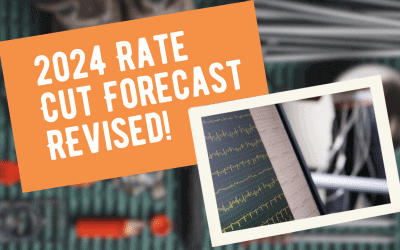The Department of Finance announced Tuesday changes to the mortgage stress test. “The new benchmark rate will be the weekly median 5-year fixed insured mortgage rate from mortgage insurance applications, plus 2%.” This change is specific to insured mortgages (i.e. mortgages with a down payment of less than 20%) and takes affect on April 6.
Do you intend on getting an uninsured mortgage? Have no fear! The Department of Finance stated that, “the Office of the Superintendent of Financial Institutions (OSFI) also announced [Tuesday] that it is considering the same new benchmark rate to determine the minimum qualifying rate for uninsured mortgages. OSFI is seeking input from interested stakeholders on this proposal before March 17, 2020.”
Sound like word salad? Ya, we thought so too. Let’s put it into really simple terms.
Presently, when you apply for a mortgage there are two important interest rates lenders use to process your mortgage application. The first is the contract rate. This is how much interest you’ll actually pay. The second is the qualifying rate, also known as the stress test. This is a rate higher than your contract rate, which is used to see if you’ll still be able to pay your mortgage even if rates increase in the near future.
The qualifying rate has changed over the last several years, but right now, it is the higher of: your contract rate plus 2%, OR the Bank of Canada’s benchmark rate. The benchmark rate is the previous week’s average 5 year posted (i.e. published) rate from the six big banks. What the Department of Finance has announced is that going forward, with regards to insured mortgages, they will instead use the average 5 year rate borrowers actually got in the previous week, plus 2%.
Contract rate: the actual interest rate you pay on your mortgage.
Qualifying rate (ie the stress test): an interest rate higher than your agreed contract rate. This rate is used to judge your ability to continue making your mortgage payments even if interest rates go up.
Purpose of the stress test
The Office of the Superintendent of Financial Institution’s (OSFI) intention in introducing the stress test in 2012 was to help limit Canadian household debt and to cool hot housing markets. However, it gradually created other complications. Despite decreasing prices and the number of eligible buyers, it caused a stall in sales because existing owners didn’t want to take a loss on equity. This had a domino effect and has prevented many existing owners from moving into new homes, thereby preventing would-be owners from making a purchase. The biggest glaring problem with how the qualifying rate is currently calculated is that the big banks’ posted rates are frequently much higher than what borrowers pay. It’s just not realistic.
John Pasalis, president of Realosophy Realty, appeared on BNN Bloomberg and explained that in the last two years the interest rate on five year mortgages has dropped about 0.45% but the qualifying rate is actually up 0.05%. The difference causes the stress test to be about 2.5% rather than the 2% OSFI has been aiming for.
“When rates drop,” Pasalis said, “we want our housing markets to be able to respond to these lower interest rates and [they weren’t] because they’re effectively pegged at the Bank of Canada rate which is a little bit inflated right now.” Using the weekly median 5-year fixed insured mortgage rate will make the stress test more flexible and realistic.
So, is this new qualifying measure on the stress test going to help smooth things over?
Mixed reviews
“Prior to this,” said Robert McLister in a Globe and Mail article, “the Big Six banks determined the benchmark rate… It’s taken a few years, but officials have finally realized that’s not a good idea. For well over a year, banks have refused to cut their posted five-year rates enough to reduce this all-important qualifying rate. That’s kept the stress test unnecessarily difficult, blocking thousands of borrowers from qualifying for the best mortgage – or qualifying at all.”
Elaine Taylor, chair of MPC (Mortgage Professionals Canada) praised the change in a news conference, but stated, “our association believes a 200-basis point test is too high, especially given our current economic climate and general expectations of future interests rates. Uncoupling the stress test from the Bank of Canada rate is the right public policy move but a reduction in the percentage test itself is also needed.”
Pasalis agrees this move isn’t big enough to make a substantial difference in the housing market. “This is really just going to impact people who are buying at the absolute margin... So it’s probably going to have some impact but not as much as some people might think.”
McLister believes the announcement is good news for sellers, but maybe not for buyers. He told BNN Bloomberg, “Barring some unexpected shock or rate spike this spring (both seemingly unlikely), this new, easier stress test should be music to the ears of home sellers. Prices in hot markets will likely surge further, leaving homebuyers with little relief until sellers deem the increases sufficient enough to put more homes on the market. As home values and loan-to-income ratios climb, don’t discount regulators’ will to maintain financial stability. We could very well see further credit policy tightening within a year or so if home values boil over.”
And there’s another concern consumers should think about. Stephen Brown, senior Canada economist at Capital Economics, said in an article, “The proposed change to the mortgage stress tests could put even more upward pressure on house prices over the next 12 months, by increasing the amount that buyers can borrow by more than [three per cent]. With the Bank of Canada already concerned about the impact that the recent loosening of financial conditions is having on the housing market, this is another reason to believe that it will leave its policy rate unchanged.”
Overview
Regardless what your take is on the issue, it’s obvious that the Federal government is taking the housing issue seriously. Just two months ago, in a long list of to do’s the Prime Minister instructed the new Minister for Finance, Bill Morneau, to review the mortgage stress test and make it more dynamic. There are many many issues the Minister could have tackled first but this is the one he picked. The stress test has not been working effectively. They see that and they’re trying to fix it.
If this overview still sounds like word salad, or if you’d like other details on the mortgage world, please contact me at josh@mortgagesforless.ca or call me at 403-241-3255.
History of the Stress Test
2012: OSFI releases its Residential Mortgage Underwriting Practices and Procedures Guideline (Guideline B-20) which includes an expectation that lenders should stress test borrowers (with variable rate mortgages and insured mortgages with terms shorter than 5 years) for adverse conditions.
2016: OSFI extends the stress test to cover all insured mortgages.
2018: OSFI specifies that potential borrowers must qualify for the higher of: their contracted mortgage rate plus 2% OR the Bank of Canada’s 5-year benchmark fixed rate. The stress test is to be used on ALL mortgage applications.
2020: Department of Finance dictates that as of April 6 all insured mortgages must qualify for the Bank of Canada’s weekly median 5 year fixed insured mortgage rate PLUS 2%.





0 Comments